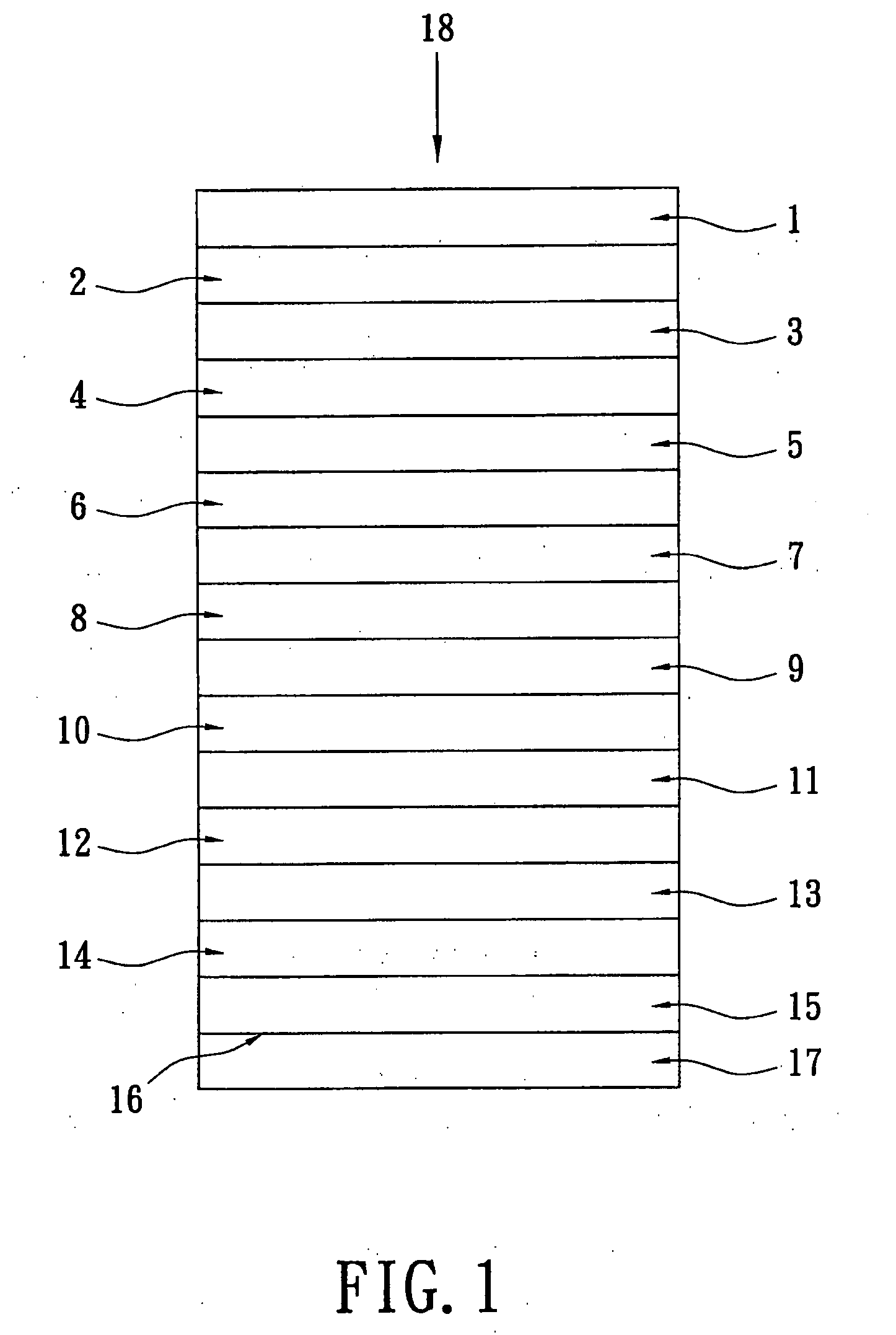Anti-reflection coating with low resistivity function and transparent conductive coating as outermost layer
a technology of resistivity function and anti-reflection coating, which is applied in the field of multi-layer systems, can solve the problems of slowing down the application of anti-reflection coating in high volume production, difficult to make electrical contact with the buried ito layer that is isolated by the outermost siosub>2/sub>layer, and achieve good electrical conductive properties. , the effect of reducing the amount of work
- Summary
- Abstract
- Description
- Claims
- Application Information
AI Technical Summary
Benefits of technology
Problems solved by technology
Method used
Image
Examples
Embodiment Construction
[0045]The present invention relates to an oxide based anti-reflection coating with 15 layers. The thickness value of each layer is specified as either a physical thickness in nm, as an optical thickness in the form of a fraction, or as a multiple of a wavelength of visible light. The typical value is 520 nm.
[0046]Reference is made to FIG. 1. A substrate 17 is composed of glass, a plastic film, or other transparent materials. A front surface 16 of the substrate 17 is that side of the substrate 17 that is facing the observer. An arrow 18 indicates the direction of viewing. A layer, which contacts the front surface 16 of the substrate 17, is named a fifteenth layer 15. In the direction the observer follows, the fourteenth layer 14 is arranged on the fifteenth layer 15, which is next to the front surface of the substrate 17. The thirteenth layer 13 is arranged on the fourteenth layer 14. The twelfth layer 12 is arranged on the thirteenth layer 13. The eleventh layer 11 is arranged on th...
PUM
| Property | Measurement | Unit |
|---|---|---|
| thickness | aaaaa | aaaaa |
| thickness | aaaaa | aaaaa |
| thickness | aaaaa | aaaaa |
Abstract
Description
Claims
Application Information
 Login to View More
Login to View More - R&D
- Intellectual Property
- Life Sciences
- Materials
- Tech Scout
- Unparalleled Data Quality
- Higher Quality Content
- 60% Fewer Hallucinations
Browse by: Latest US Patents, China's latest patents, Technical Efficacy Thesaurus, Application Domain, Technology Topic, Popular Technical Reports.
© 2025 PatSnap. All rights reserved.Legal|Privacy policy|Modern Slavery Act Transparency Statement|Sitemap|About US| Contact US: help@patsnap.com



